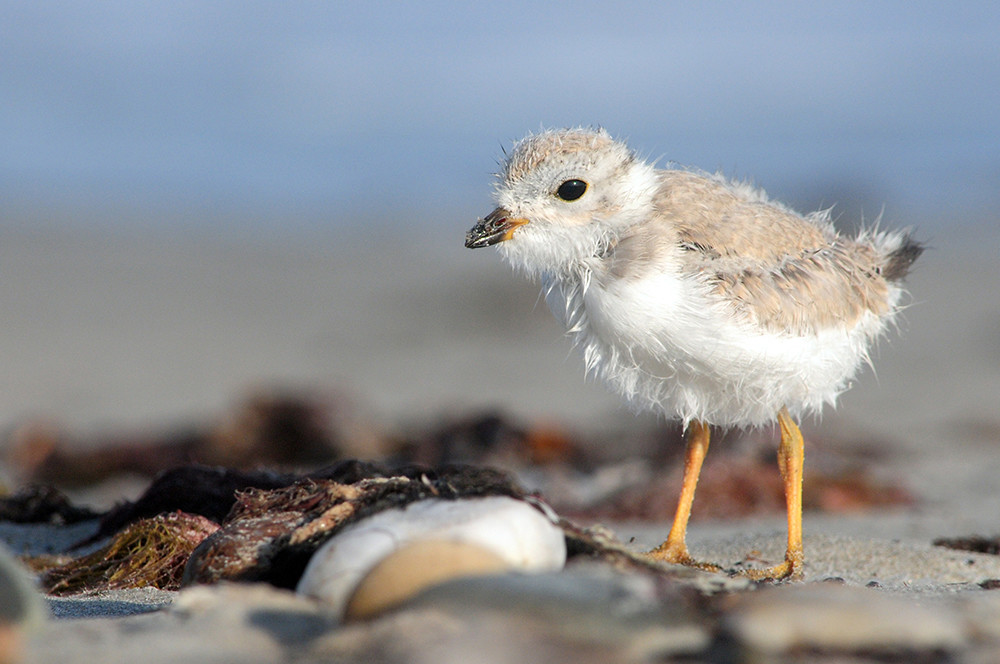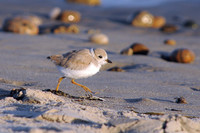Fight for the plover is far from over
Thirty years on, piping plovers still fighting for survival on local beaches
It's been more than 3 decades since the piping plover was federally listed as threatened in 1986, and while federal and state agencies have made great strides in protecting this shorebird, they are …
This item is available in full to subscribers.
Please log in to continue |
Register to post eventsIf you'd like to post an event to our calendar, you can create a free account by clicking here. Note that free accounts do not have access to our subscriber-only content. |
Day pass subscribers
Are you a day pass subscriber who needs to log in? Click here to continue.
Fight for the plover is far from over
Thirty years on, piping plovers still fighting for survival on local beaches
It's been more than 3 decades since the piping plover was federally listed as threatened in 1986, and while federal and state agencies have made great strides in protecting this shorebird, they are not out of the woods — by any measure. There are only 100 nesting pairs of this globally-threatened bird in the state of Rhode Island, with two of the nesting sites — Sachuest (2nd) beach and Goosewing Beach in Little Compton on this side of the bay.
"Piping plovers are still considered threatened," said Jennifer White, who coordinates oversight of the birds for the Fish & Wildlife service, which oversees the Sachuest Beach nesting site. Threats against the birds are numerous, from predation by foxes, raccoons, skunks and crows, to accidental next destruction by humans and dogs. Even their own biology works against them, in a way. "They have a very short life span," said White. "Only about 5 years. So every nesting attempt is important for their long-term success."
Historical challenges
Plovers were actually hunted, along with other shorebirds, in the 19th century. The hunt was known as "market gunning" and it wiped out populations of birds just as surely as bison were being extirpated from the Great Plains. Though that ended at the turn of the century, relief to piping plover populations was short-lived. The post-WWII boom and increase in leisure time sent Americans flocking to the shores for recreation, placing another kind of pressure on shorebird populations. In addition to the increase in foot traffic, beach management combed through the natural raft of ocean debris that provides forage for chicks.
Nesting now
In the West Bay, it's the Rhode Island DEM that helps to oversee nesting sites like the Roger Wheeler State Beach, where officials recently managed a nail-biter of a nesting attempt in which three chicks were hatched in the parking lot. Closure of the lot and construction of a sand-covered plywood ramp helped those three baby birds get to the sand in June, where they follow their parents’ lead in foraging for marine worms, crustaceans, and insects.
“DEM has been thrilled to help the United States Fish and Wildlife Service give these piping plover chicks a better chance,” according to a statement by Rhode Island Department of Environmental Management (DEM) Director Janet Coit. “We hope they survive the days and weeks ahead and one day become the feisty, fascinating shorebirds we sometimes see on the beach; obviously, nature will have the final say.”
In Little Compton, it's the Nature Conservancy, and Jeanne Cooper, their shorebird program manager, who is working to ensure the species' survival. "The news just keeps getting better," Cooper said. "There were only 20 breeding pairs in Rhode Island in 1986, now there are 100."
Leash dogs, respect signs
"Camouflage is their best defense — for the eggs, chicks, and adults," said Cooper. "We call them ghosts in the sand." But their best defense can be a liability when it comes to human's (generally unintentional) interference. People routinely approach areas on Sachuest beach that have been cordoned off to protect plovers, and even allow dogs to run off leash in the area.
"Dogs don't belong on beaches where the plovers are nesting," said Cooper. "They aren't allowed on Goosewing Beach from April 1 to Sept. 1, but they are allowed on adjacent South Shore beach." Dogs are likewise allowed, after hours, on Sachuest.
Plovers nest beginning in late April, through June; then it takes nearly a month before the chicks fledge, adding flight to their defensive abilities. It's a long window of time, through some of the busiest weeks on our beaches. Despite the gains of the last 30 years, plovers could still use as much of our help as we can give.
US Fish & Wildlife Services’ Tips: How Can You Help the Piping Plover?
— Watch these entertaining birds from a distance. Respect all fenced or posted areas for the protection of wildlife.
— Do not feed animals on or near the beach. Don’t leave or bury trash or food scraps on the beach. Garbage attracts predators – such as skunks, weasels, raccoons, etc. – that may prey upon piping plover eggs or chicks.
— Don’t bring pets to nesting sites. Keep cats indoors.
— People and wildlife can share the beach. If you keep your distance, you can walk, fish, kayak, read, relax, beachcomb, take photos, splash in the waves, search for sea glass, sunbathe, bike, and watch birds without disturbing them the chicks.
— Volunteer! For more information, visit www.fws.gov.









